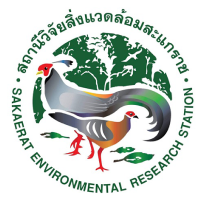Keywords :
Elapidae; Home Range; Movement; Protected Area; Radio Telemetry; Snake; Southeast Asia
บทคัดย่อ :
A species spatial ecology has direct implications for that species conservation. Far-ranging species may be more difficult to conserve because their movements increase their chances of encountering humans. The movements can take them out of protected areas, which is especially risky for species that are routinely persecuted. The king cobra (Ophiophagus hannah), a large venomous elapid, is subject to anthropogenic pressures, such as persecution and habitat loss. Here we present results from a study using radio telemetry to quantify movements and habitat use of nine king cobras in and around a protected area in Northeast Thailand. This study is the first investigation into the movements and habitat use of king cobras outside of the Western Ghats, India. On average, the tracked king cobra s use areas of 493.42 (+-) 335.60 ha (95% fixed kernel), moving 183.24 (+-) 82.63 m per day. King cobras did not remain in intact forested area. Five of the individuals frequently used the human-dominated agricultural areas surrounding the protected area, appearing to make regular use of irrigation canals. Two adult males showed increases in movements during the breeding season. One male s increased breeding season range caused him to venture beyond the protected area, shifting his habitat use from intact forests to scrub in human-dominated areas. King cobras large home range and willingness to use anthropogenic landscapes merits special consideration from conservation planners.
เอกสารอ้างอิง :
Marshall, B. M., Strine, C. T., Jones, M. D., Artchawakom, T., Silva, I., Suwanwaree, P., & Goode, M. (2018). Space fit for a king: spatial ecology of king cobras (Ophiophagus hannah) in Sakaerat Biosphere Reserve, Northeastern Thailand. Amphibia-Reptilia, 40(2), 163-178.



